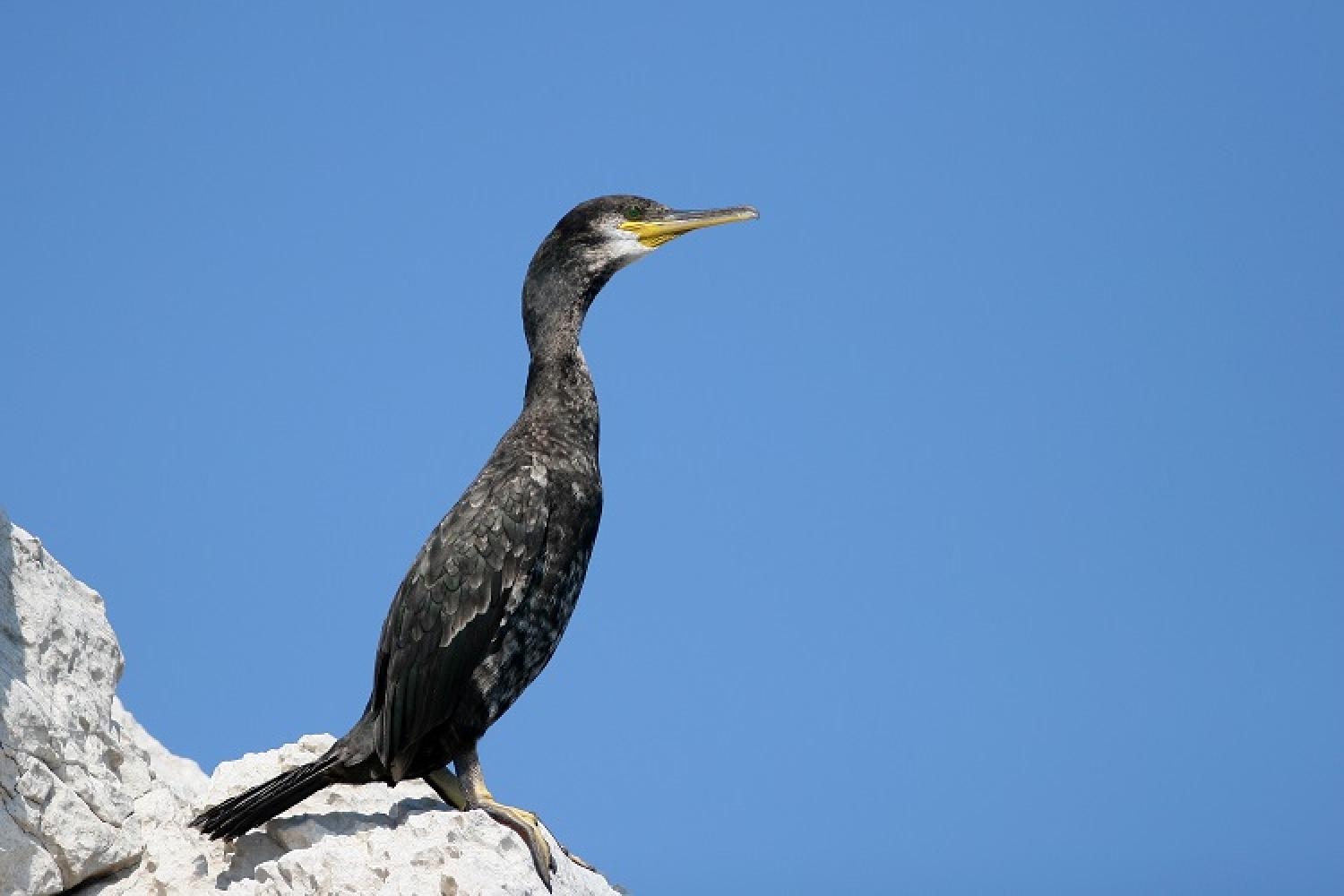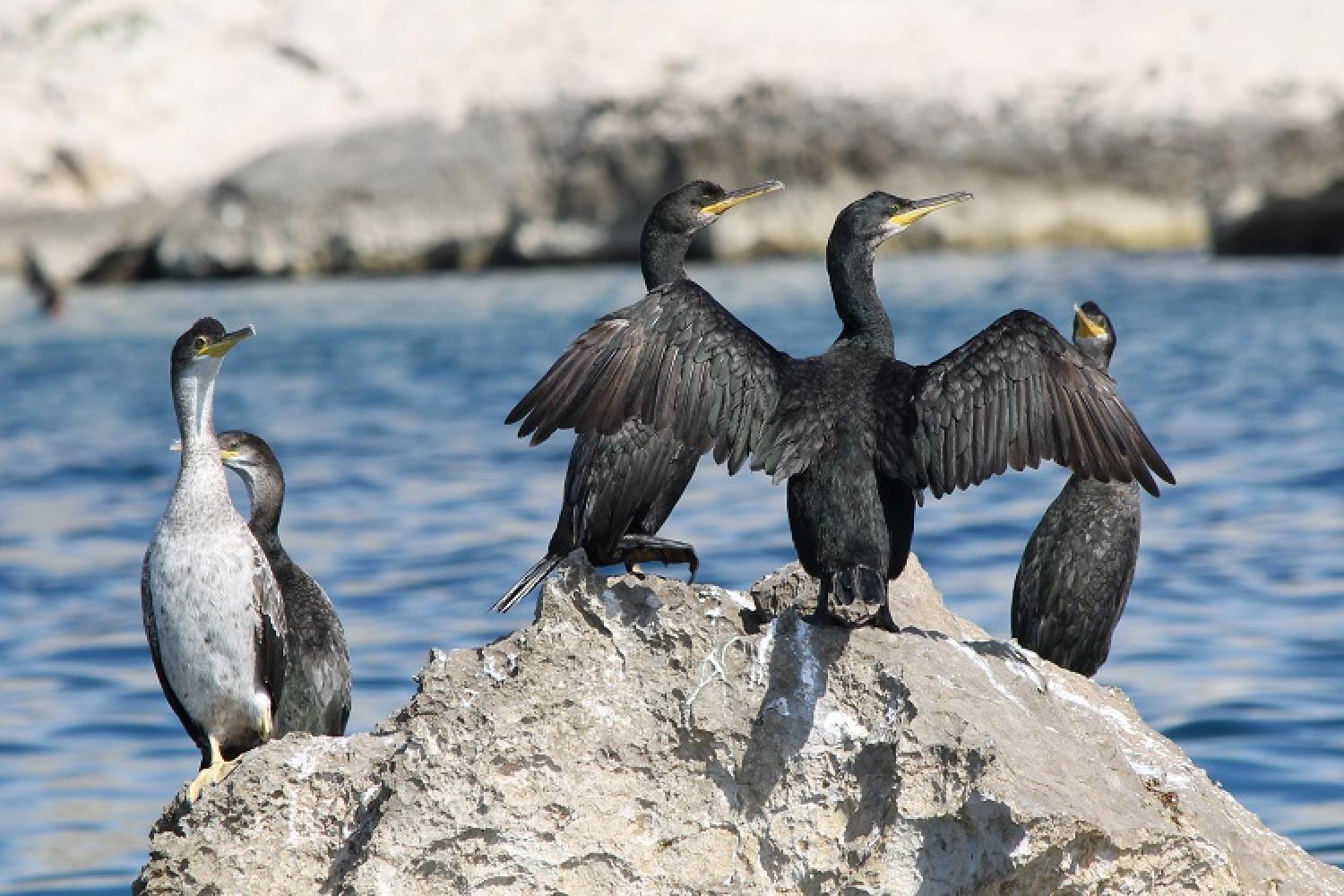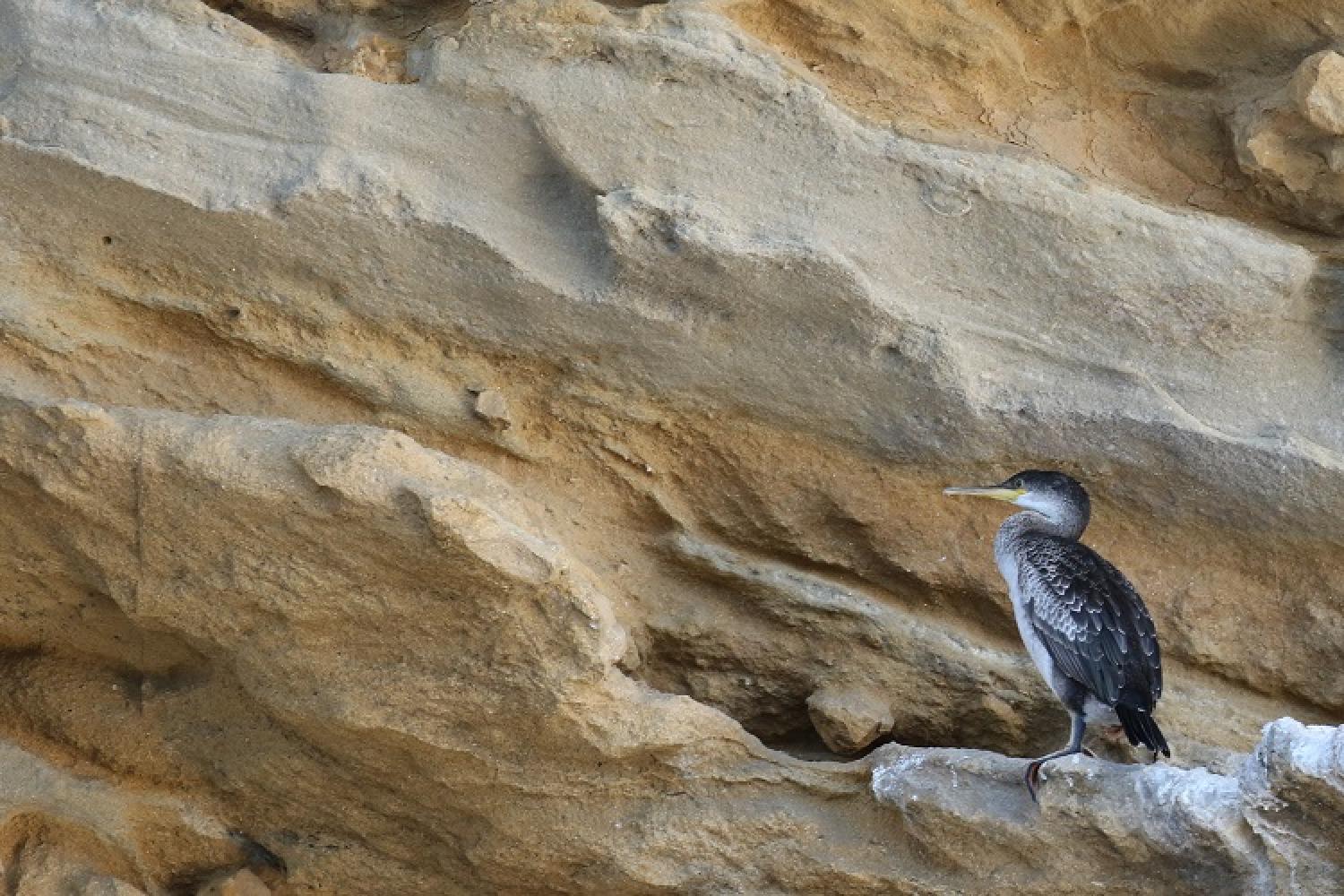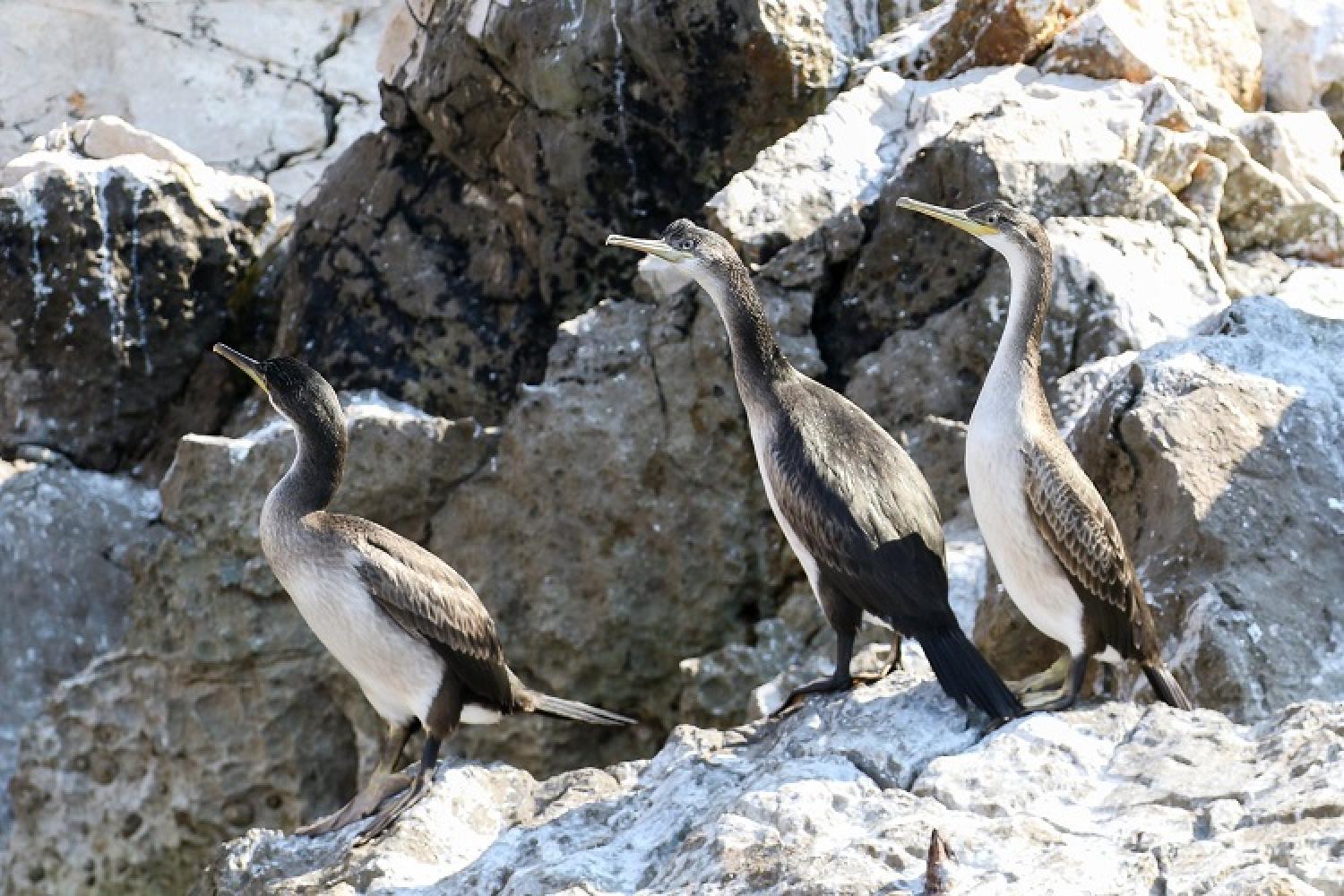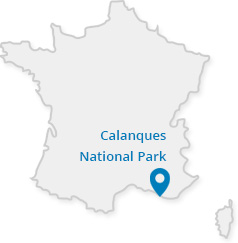This unbeatable swimmer feeds on fish that it hunts underwater. It can dive more than 30 meters deep and remain submerged for two minutes! It can often be seen with its wings stretched out in the sun to dry its feathers after having caught fish
Scientific name : Phalacrocorax aristotelis
Breeding season : November to June
 Did you know ?
Did you know ?
The European shag only lives in the Mediterranean. The Riou archipelago is home to the second biggest colony in France.
 Conservation stake
Conservation stake
![]()
 Threats
Threats
- Nautical activities by humans
- Accidental capture in fishing boats
- Changes to its environment
 Conservation management initiatives
Conservation management initiatives
- Channelling marine activities
- Prohibiting disembarkation in some areas
 How can I help to protect it?
How can I help to protect it?
- I keep a safe distance away from coastal cliffs and go by slowly
- I only disembark where it is authorised




